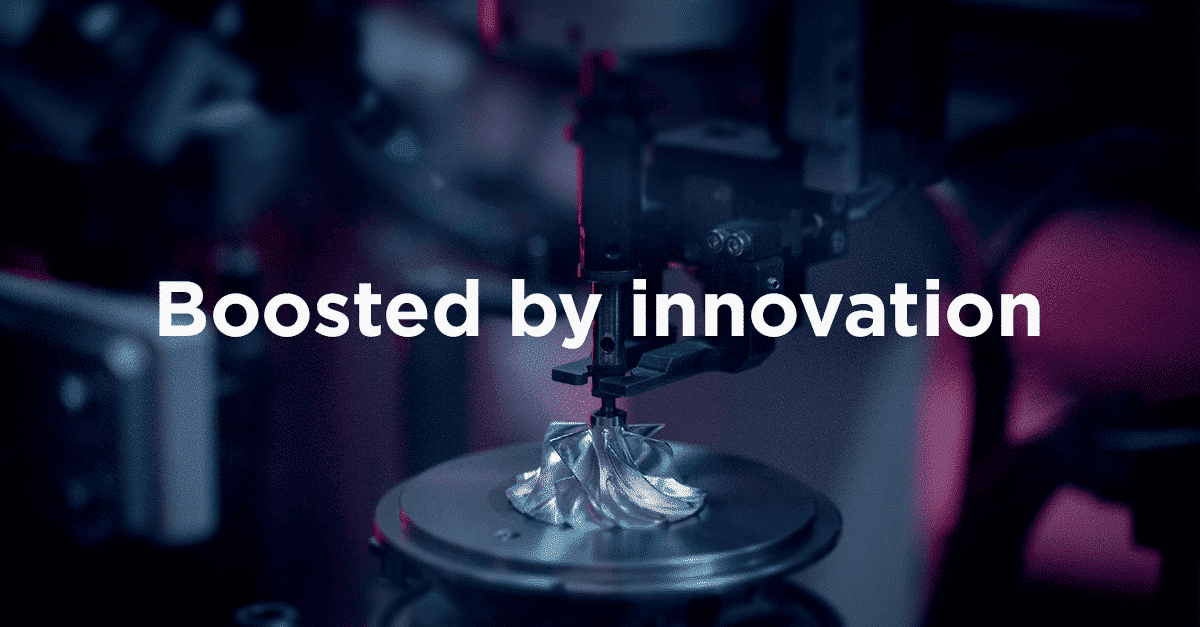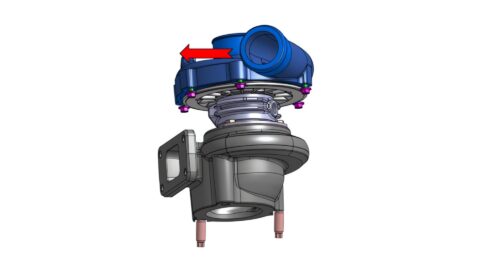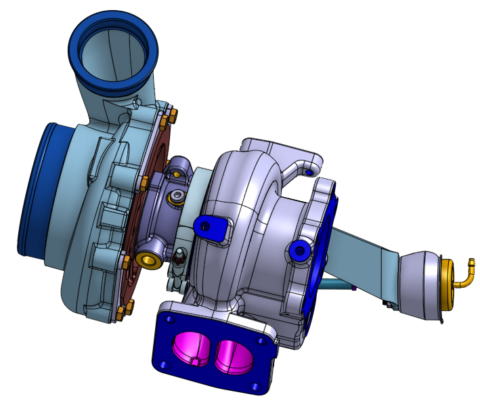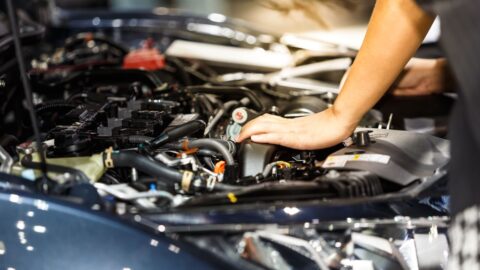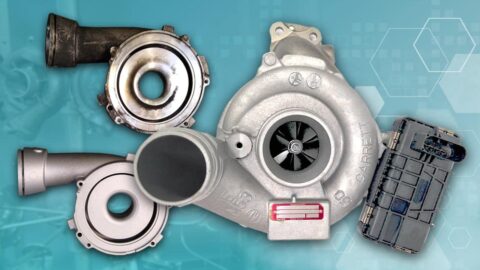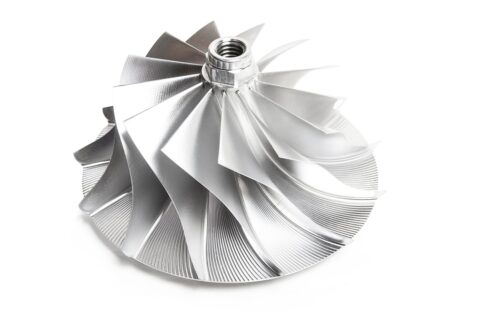Accessing the Knowledge Center effectively requires a simple, one-time registration.
8 facts about Garrett turbocharged engines
Every day, millions of cars benefiting from Garrett Motion turbos are driven on the world’s highways.
Demand for turbocharging has grown exponentially over the last 30 years, with auto makers embracing the technology to help drive fuel efficiency, meet emissions standards and enhance driveability.
Turbos are exceptionally reliable components within modern powertrains, with Garrett turbos routinely offering a lifecycle of up 150000 km. They’re also very complex machines, so here are 8 insights into how turbos work and what to look out for when fault finding or considering a turbo replacement.
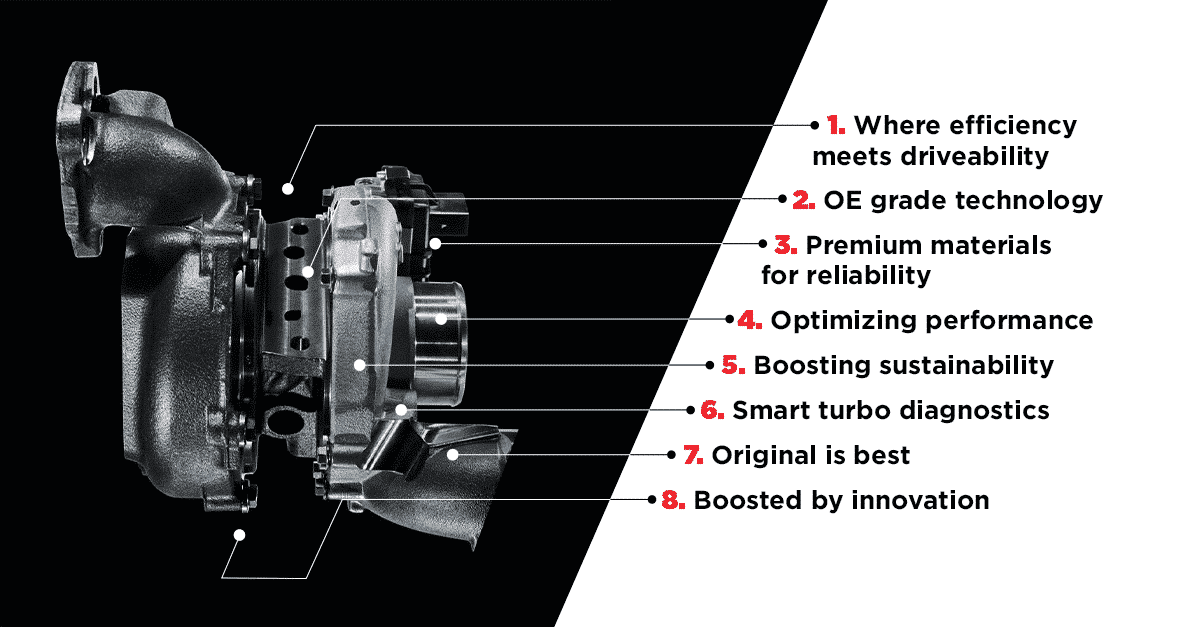
1. Where efficiency meets driveability
A turbocharger harnesses exhaust gas energy from an internal combustion engine and uses it to drive a turbine that spins an air compressor. For an engine to burn fuel more efficiently, it needs as much oxygen as possible, so the turbo is used to compress the air, increase its density and force it into the engine’s cylinders. This results in more efficient burning of fuel per stroke and produces more power than an equivalent-sized naturally-aspirated engine.
This process demands precision engineering and high quality manufacture because, at high loads, the air passing through the compressor can reach a velocity close to supersonic. This air contains kinetic energy, which is converted into pressure energy via a diffuser placed between the compressor housing and the backplate. As the air exits the diffuser, it enters a snail-shaped volute which slows it down, achieving maximum pressure and density.
The result is an engine combustion process that is more fuel efficient, emits lower levels of emissions and provides more responsive performance.
Core components of a turbocharger:
- Ball bearings;
- Oil inlet;
- Turbine Housing (engine exhaust gases are collected in the turbine housing and channeled to the turbine wheel);
- Turbine Wheel (converts exhaust energy into shaft power to drive the compressor);
- Center Housing (supports the rotating group);
- Compressor Housing (collects compressed air and directs it to the engine);
- Compressor Wheel (pumps pressurized air into the engine);
- Backplate (supports the compressor housing and provides aero surface).
2. OE grade technology
Turbocharged powertrains are designed to withstand the higher pressures and temperatures needed for engine boosting systems. Garrett turbochargers are highly complex, expertly engineered and capable of operating at rotational speeds up to 300,000 RPM.
Should a Garrett turbocharger reach the end of its working life, garages can access a portfolio of around 8,000 OE-grade service replacement models, covering all major passenger vehicle line-ups. What’s more, Garrett technology is routinely uprated with latest innovations to ensure that mechanics can offer the highest quality replacement parts to their customers.
3. Premium materials for reliability
All Garrett replacement turbos meet the rigorous specification of auto makers, with each unit manufactured and calibrated to original equipment specification and certified to perform reliably for three years or up to 150,000km. This is critical, given that some systems rotate at 300,000 rpm and operate in temperatures up to 1050oC.
Engineering design and materials are fundamental to turbo performance and life expectancy. Some copy turbos have been known to fail within hours of installation – and the result can be catastrophic engine damage. For example, in sub-standard replacement turbos, bearing problems are commonplace, and bolts joining the turbine housing to the center housing have been known to ‘relax’, resulting in gas leakage, mechanical damage and oil contamination of the catalytic converter or DPF system.
4. Optimizing performance
Turbo lag is a phenomenon created by a delayed response between the throttle opening and the spooling up of the turbo. Thanks to engineering innovation and advances in electrification, Garrett has all but eliminated turbo lag, but it can still be a feature when mechanics choose to replace OE quality technology with copy turbos. Independent lab tests have demonstrated a 40% performance gap between genuine Garrett aftermarket turbos and copies.
The Garrett brand is synonymous with world-leading innovation and quality – which stands in stark contrast to the reputational and business risks being run by some garages choosing to use low cost, non-OE quality turbos and copycat units.
 5. Boosting sustainability
5. Boosting sustainability
Turbo technology is fundamental to the auto industry’s drive for downsized, more efficient, better performing engines that meet increasingly stringent emissions standards. Garrett turbo systems strike the perfect balance between the latest efficiency/emissions standards and enhancing performance.
Our studies show that Garrett turbos provide superior driveability, with up to 40% better low-end torque than non-original turbos
6. Smart Turbo Diagnostic
Identifying turbo faults can be tricky, because an apparent symptom can often be the result of a different underlying engine problem. For example, oil leakage can damage a turbocharger, but the source could be the incorrect functioning of a different engine component.
If engine oil and filter change intervals have not been maintained, the build-up of minute carbon particles from the combustion process can turn the lubricant into a highly effective polishing or lapping medium, which will can damage bearings and cause a turbo issue.
Garrett’s Installer Connect mobile app helps mechanics find the root cause of the problem through an intuitive step-by-step diagnostics tool. This enables technicians to run through a smart checklist of fault symptoms while working on the customer’s vehicle. This easy and timely access to an expert diagnostic pathway via a mobile device enables mechanics to progressively, methodically and conveniently home in on the source of any problem.
If you want to learn more about turbo damage, oil leakage and external influences check out our Installer Connect Level 4 Training Notes.
7. Original is the best
Working on a car with a turbo installed? There’s a high degree of probability that it will be a Garrett turbo. One of the best ways to check if it is Garrett original technology is to check the part number on our catalog.
The nameplate will vary according to whether it is original equipment installed by the vehicle manufacturer or a turbo bought through the independent Aftermarket. The nameplate displays the Garrett part number, turbo model, and serial number – everything needed to order a replacement turbo.
For more information and advice about turbochargers, check out Garrett’s online Knowledge Center. And remember, the interactive Installer Connect program offers multi-level, training modules purpose-designed to help technicians boost their turbo expertise, earn capability certificates and win customer recognition. So feel free to dig in.
8. Boosted by innovation
Garrett’s rich heritage of innovation goes back more than 65 years when John Clifford Garrett developed the T15 turbo in 1954 for a Caterpillar D9 crawler.
Fast forward to the 21st century, and in the intervening years the company has developed multiple auto industry ‘firsts’ – including the legendary Variable Nozzle Turbine turbo. Garrett is also a leader on the racetrack, having boosted 23 winners of the 24 Hours of Le Mans, plus numerous podium positions in other motorsports series
And the story of innovation and engineering excellence continues. Today, the company is at the forefront of electrification, through its market-leading E-Turbo and fuel cell technologies. We continue to elevate research and development in the auto industry on the road to zero emissions, working in partnership with manufacturers on future-focused solutions while enabling garages and mechanics to meet the engine boosting needs of their customers.
